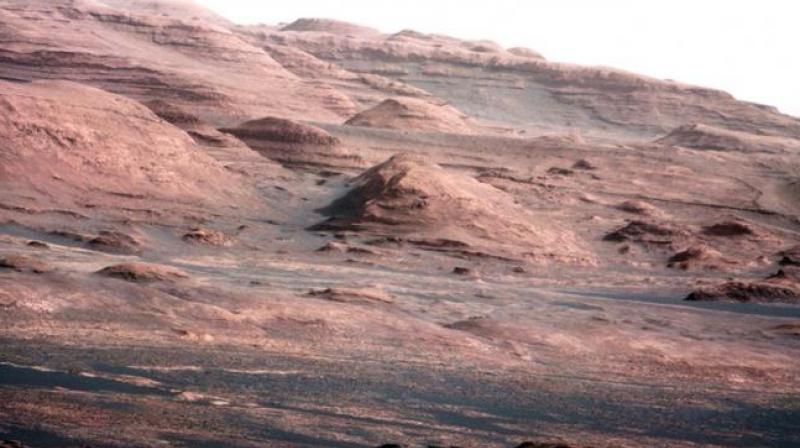NASA gravity map shows Mars has porous crust

Mars' crust is not as dense as previously thought, which means that at least a part of it is relatively porous, suggests a gravity map of the red planet created by NASA scientists.
The finding may help better understand the red planet's interior structure and evolution, according to the US space agency. However, scientists said that they cannot rule out the possibility of a different mineral composition or perhaps a thinner crust.
"The crust is the end-result of everything that happened during a planet's history, so a lower density could have important implications about Mars' formation and evolution," said Sander Goossens of NASA's Goddard Space Flight Center in Maryland, US.
The researchers mapped the density of the Martian crust, estimating the average density is 2,582 kilogrammes per cubic metre. That is comparable to the average density of the lunar crust.
Typically, Mars' crust has been considered at least as dense as Earth's oceanic crust, which is about 2,900 kilogrammes per cubic metre. The new value is derived from Mars' gravity field, a global model that can be extracted from satellite tracking data using sophisticated mathematical tools.
The gravity field for Earth is extremely detailed, because the data sets have very high resolution. Recent studies of the Moon by NASA's Gravity Recovery and Interior Laboratory, or GRAIL, mission also yielded a precise gravity map.
The data sets for Mars do not have as much resolution, so it is more difficult to pin down the density of the crust from current gravity maps.
As a result, previous estimates relied more heavily on studies of the composition of Mars' soil and rocks. "We are coming to the conclusion that it is not enough just to know the composition of the rocks," said Greg Neumann, co-author of the research paper published in the journal Geophysical Research Letters.
Before taking on Mars, the researchers tested their approach by applying it to the gravity field that was in use before the GRAIL mission. The resulting estimate for the density of the Moon's crust essentially matched the GRAIL result of 2,550 kilogrammes per cubic metre.
From the new model, the team generated global maps of the crust's density and thickness. These maps show the kinds of variations the researchers expect, such as denser crust beneath Mars' giant volcanoes.

